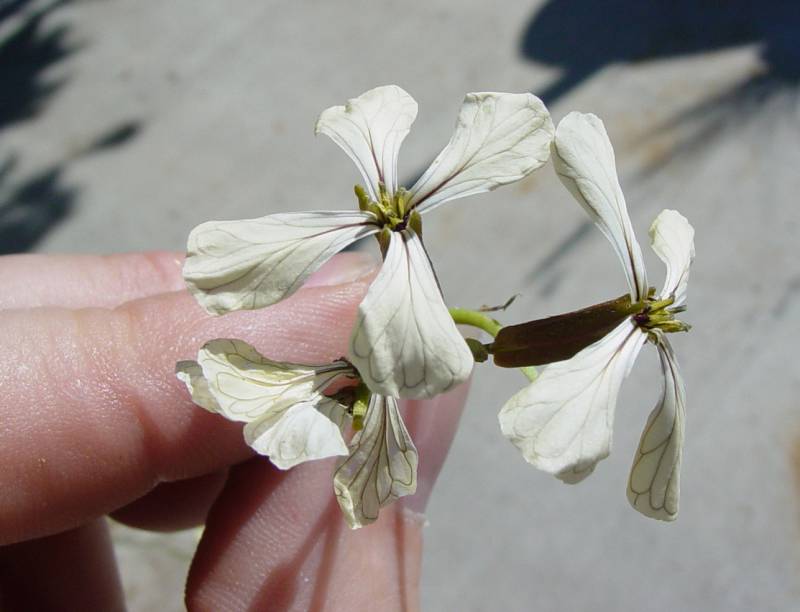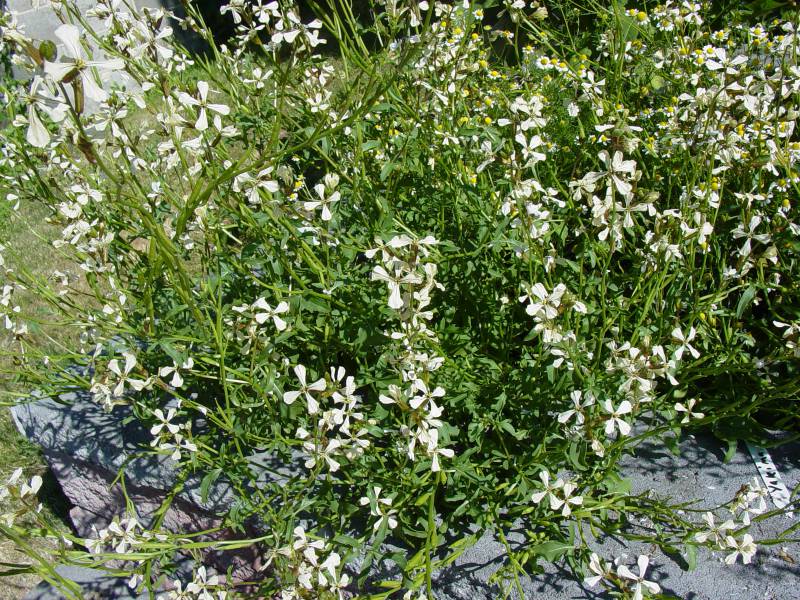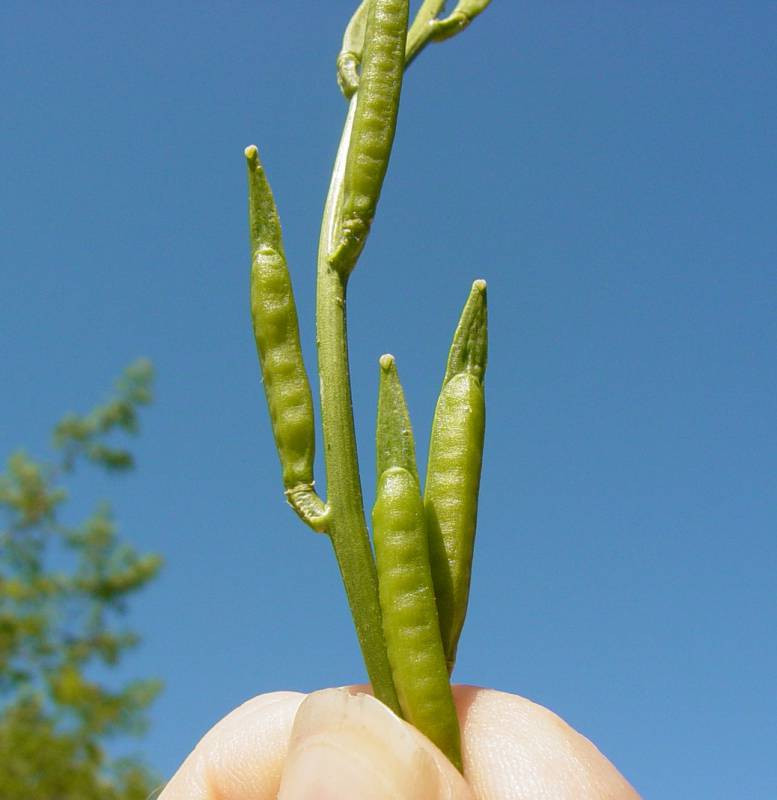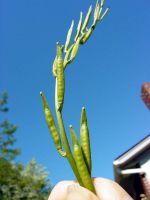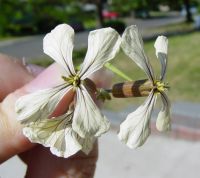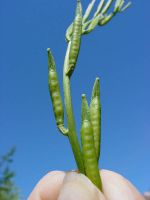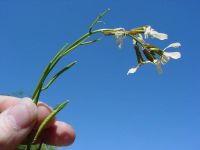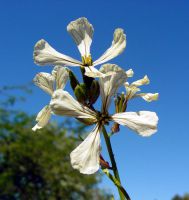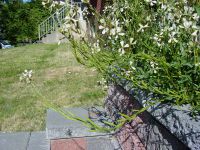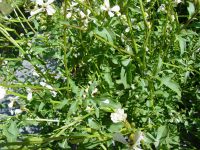Distribution: Occurring in scattered locations on both sides of the Cascades crest British Columbia to California, east across most of North America to the Atlantic Coast.
Habitat: Grain fields and waste ground.
Flowers: May-June
Origin: Introduced from Eurasia
Growth Duration: Annual
Conservation Status: Not of concern
Pollination: Bees, flies, butterflies
Soft-pubescent annual, the stems usually branched at the base, 2-10 dm. tall.
Basal leaves in a rosette, 5-15 cm. long, broadly oblanceolate, wavy-pinnatifid; cauline leaves similar, alternate, few, reduced.
Inflorescence of bractless racemes; pedicles stout, ascending; sepals 4, 7-10 mm. long; petals 4, clawed, 15-20 mm. long, white to yellowish, with reddish-purple veins; stamens 6; style nearly as long as the valves.
Siliques erect, lance-ovoid, 15-25 mm. long and 3-5 mm. thick, terete, 1- to 3- nerved, tapered to a broad, flat beak (style); seeds in 2 series.
Publication: Descr. Pl. 426. 1802.
- ssp. sativa – garden rocket Occurring in scattered locations on both sides of the Cascades crest; British Columbia to California, east across most of North America to the Atlantic Coast.
PNW Herbaria: Specimen records of Eruca vesicaria in the Consortium of Pacific Northwest Herbaria database
WA Flora Checklist: Eruca vesicaria checklist entry
OregonFlora: Eruca vesicaria information
E-Flora BC: Eruca vesicaria atlas page
CalPhotos: Eruca vesicaria photos

